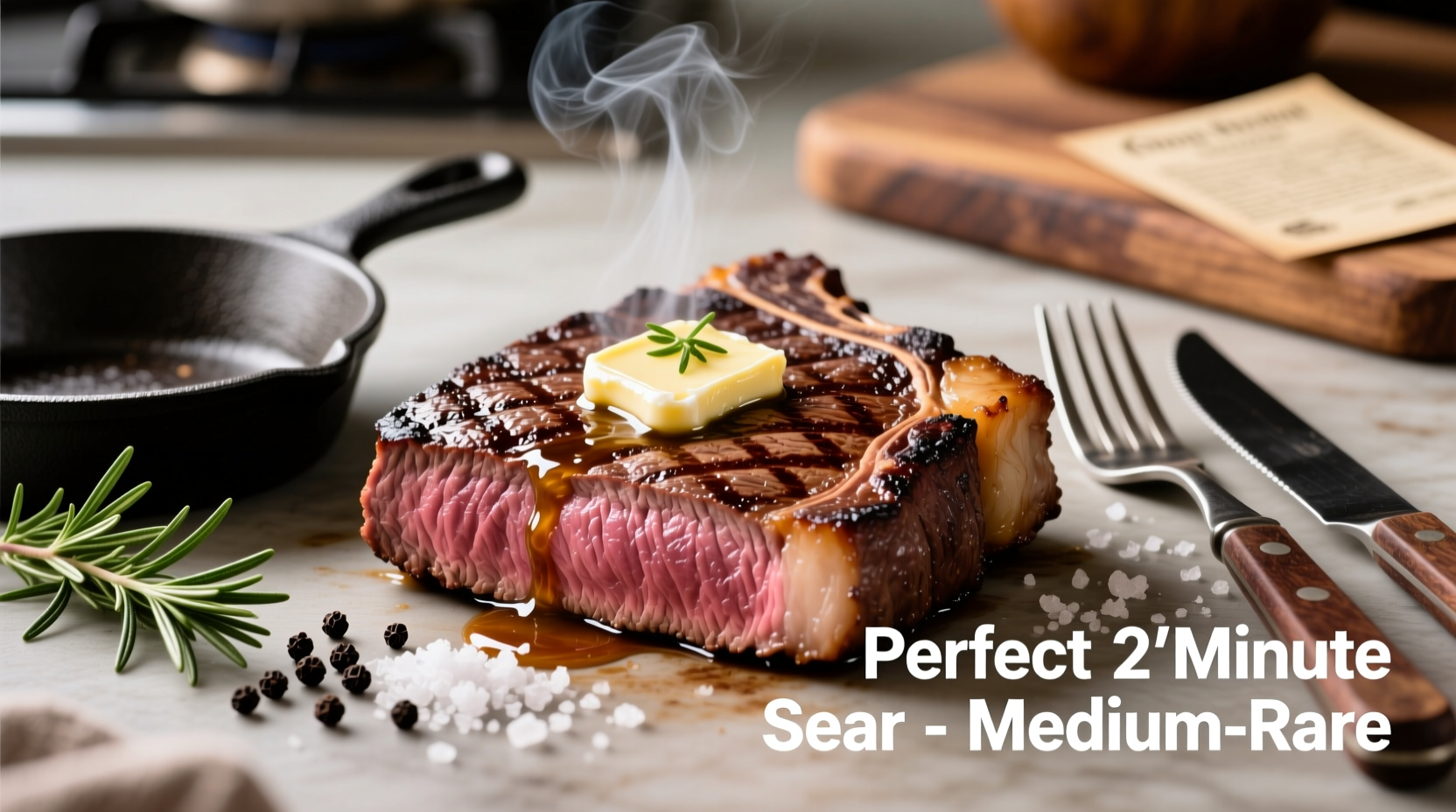The perfect striploin steak requires proper selection, 30-60 minutes of room temperature resting, high-heat searing (400-450°F), precise internal temperature monitoring (125°F for medium-rare), and 5-10 minutes of resting before slicing. This guide provides step-by-step instructions for pan-searing, grilling, and oven methods.
Selecting Your Striploin Steak
Choosing quality meat makes or breaks your cooking results. Look for these characteristics when selecting your striploin (also known as New York strip):
- Marbling: Fine white fat streaks throughout the red meat indicate flavor potential
- Color: Bright cherry red (avoid brown or dull hues)
- Thickness: 1.5 inches ideal for proper sear without overcooking
- Grade: USDA Prime offers best marbling, Choice provides excellent value
According to the USDA Meat and Poultry Hotline, proper handling begins at purchase. Keep steaks cold during transport and refrigerate within 30 minutes of buying. Store at 40°F or below and cook within 3-5 days for optimal freshness.

Essential Preparation Steps
Proper preparation transforms good steak into exceptional steak. Follow these critical steps:
- Dry brine: Season generously with coarse kosher salt 1-2 hours before cooking (1 teaspoon per pound)
- Temperature equalization: Remove from refrigerator 30-60 minutes before cooking
- Drying surface: Pat thoroughly with paper towels to ensure proper sear
- Seasoning: Add freshly cracked black pepper and optional garlic powder just before cooking
Food science confirms that dry brining draws moisture to the surface, dissolves salt, then reabsorbs it—seasoning the entire cut while improving moisture retention during cooking.
Cooking Methods Compared
| Method | Best For | Temperature | Cooking Time (1.5") | Key Advantage |
|---|---|---|---|---|
| Pan-Searing | Indoor cooking, consistent results | 400-450°F | 4-5 min/side + 2-3 min edges | Perfect crust development |
| Grilling | Summer cooking, smoky flavor | Direct: 500°F+ Indirect: 350°F |
3-4 min/side direct 5-8 min indirect |
Charred flavor complexity |
| Oven Finish | Thicker cuts (2"+) | Sear: 450°F Oven: 375°F |
3 min/side sear 8-12 min oven |
Even cooking throughout |
Pan-Searing Technique: Step by Step
For the most reliable indoor results, follow this professional method:
- Heat cast iron or carbon steel skillet over medium-high heat for 5 minutes
- Add high smoke-point oil (avocado or grapeseed) until shimmering
- Place steak in skillet away from you to prevent oil splatter
- Sear undisturbed for 4-5 minutes until deep brown crust forms
- Flip and sear other side 4-5 minutes
- Rotate to sear edges 2-3 minutes using tongs
- During last 2 minutes, add butter, garlic, and herbs to baste steak
- Check internal temperature with instant-read thermometer
Precision Temperature Guide
Doneness depends on internal temperature, not cooking time. Insert thermometer horizontally into thickest part:
- Rare: 120-125°F (bright red center) - remove at 115°F
- Medium-rare: 125-130°F (warm red center) - remove at 120°F
- Medium: 130-135°F (warm pink center) - remove at 125°F
- Medium-well: 140-145°F (slight pink) - remove at 135°F
- Well-done: 150°F+ (little to no pink) - not recommended for striploin
The USDA Food Safety and Inspection Service recommends minimum internal temperature of 145°F for beef steaks with 3-minute rest time for food safety. However, culinary professionals typically cook striploin to medium-rare (125-130°F) for optimal tenderness and flavor.
Resting and Serving Secrets
Never skip the resting phase—this allows juices to redistribute:
- Transfer steak to cutting board or warm plate
- Tent loosely with foil (don't seal tightly)
- Rest 5-10 minutes (1 minute per 1/4 inch thickness)
- Slice against the grain at 45-degree angle
- Cut into 1/2 inch thick slices for maximum tenderness
Resting increases internal temperature 5-10 degrees (carryover cooking), so remove steak from heat source 5 degrees below your target temperature. This prevents overcooking while ensuring food safety.
Avoid These Common Mistakes
Even experienced cooks make these errors when preparing striploin steak:
- Skipping room temperature rest: Cold meat cooks unevenly
- Overcrowding the pan: Lowers temperature and prevents proper sear
- Constant flipping: Interrupts crust formation (flip only once)
- Cutting too soon: Releases precious juices onto the plate
- Using low smoke-point oils: Extra virgin olive oil burns at searing temperatures
According to culinary research published in the Journal of Food Science, flipping steak only once creates superior crust development through the Maillard reaction—the chemical process that creates complex flavors during high-heat cooking.











 浙公网安备
33010002000092号
浙公网安备
33010002000092号 浙B2-20120091-4
浙B2-20120091-4